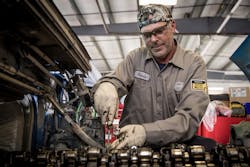New technology’s impact on the technician shortage
Last week Nikola had a two-day event showcasing its hydrogen-electric technology for a variety of applications including trucking. The company also announced its plans to work on building out a fueling infrastructure.
However, hydrogen-electric is not the only place we are seeing technological development. Companies that have been in the trucking industry for a long time, along with some new entrants, are working on making electric powered vehicles an option for some segments of the market. And there is also a fair amount of development going on in the area of autonomous vehicles.
It’s enough to make your head spin.
None of this is going to happen overnight; but much of it will happen over time and we would all be foolish not to spend some time staying informed.
All these new technological developments are going to add additional pressure on the already strapped technician workforce. The Bureau of Labor Statistics estimates that by 2022 there will be a need for 67,000 technicians to replace retiring workers along with the 75,000 technicians that we will need to add to meet market demand.
There is already a shortage of qualified technicians and both fleets and other service providers are investing heavily in keeping the technicians they do have properly trained to work on today’s more technologically advanced vehicles.
As new technology trickles into the industry, we will need to take the steps necessary to ensure our technicians are able to perform the necessary maintenance and repair on those enhanced vehicles.
For fleets doing their own maintenance, this could be the straw that breaks the camel’s back in terms of the increased capital expenditures for the vehicles themselves, but also the expenditures that will be needed not only to find these technicians, but also to ensure they have the proper skills to service the new generation of vehicles.
Technology is just going to keep advancing and with it, a possible change in the way vehicles are maintained and repaired.
Now might be a good time to look into partnering with an outside service provider for your vehicle acquisitions as well as for maintenance and repair needs. Doing so will shift the burden of finding technicians — making sure they have the proper training and access to the right tools and equipment — away from you so you can concentrate on doing what you do best, getting the goods you manufacture to their distribution points.
About the Author
Joseph Evangelist
Joseph Evangelist previously served as EVP for Transervice, president of LLT International Inc., and CEO of Lend Lease Trucks Inc. Evangelist is a seasoned transportation executive with domestic and international experience in sales, operations, mergers, and acquisitions.
